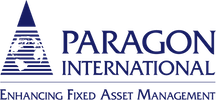Does your company have previously overpaid taxes that you would like to recover – and potentially get a tax refund? A Cost Segregation Look-Back Study is a valuable, often overlooked tool for companies to recover overpaid taxes. The Study identifies misclassified or reclassified property and simplifies the depreciation recovery process.
A Cost Segregation Look-Back Study involves a detailed review of cost capitalizations on prior construction, leasehold improvements, renovations, and acquisitions. It determines potential asset life reclassification and recovery of unclaimed depreciation to which the company was entitled.
Recent changes to the tax codes offer additional tax depreciation deductions – many of which can be applied to previous years’ earnings. This includes the Tax Cuts and Jobs Act of 2017 (TCJA), the Coronavirus Aid, Relief, and Economic Security Act of 2020 (CARES Act), and the Energy Policy Act of 2005 (EPAct).
Quick and Easy Tax Refunds with a Simple IRS Form
Companies can recover taxes overpaid in prior years and get quick refund checks or reduce their quarterly tax payments. IRS Revenue Procedure (Rev Proc) 2007-16 addresses the issue of companies that have claimed less depreciation than what they were entitled to, or in other words, less than the allowable amount. It allows such companies to change their method of accounting and claim the new or correct allowable depreciation amount.
Companies do not need to file amended tax returns or wait until filing their returns at the end of the year. A simple form – IRS Form 3115, Corporation Application for Tentative Refund – can be filed with the estimated quarterly tax payment. A refund can be from an overpayment of tax under a claim of right adjustment under IRS Section 1341, or the carryback of a net operating loss (or a loss from operations of a life insurance company), net capital loss, or unused general business credit.
Read our Whitepaper for more information on maximizing tax deductions with recent tax laws.
Identifying and Reclassifying Depreciable Assets
Cost Segregation is the process of identifying and separating construction-related personal property assets from real property assets. Personal property is considered items that are attached to the building or land, but are not required for the overall basic operation of the building. While land improvements are part of real property, they have a shorter asset class life, and are often reclassified, as well.
A Cost Segregation Study reclassifies these assets, allowing you to depreciate them over a shorter tax life. For commercial buildings, the depreciable life is reduced from 39 years to a much shorter 5, 7 or 15 years, depending on the asset class – or allowable 100% bonus depreciation.
A critical key is understanding how portions of specialty systems, such as electrical, telecommunications or exhaust systems, relate to specific business processes versus basic building functions. This approach is supported and documented through years of tax rulings and court cases.
Paragon’s highly experienced cost segregation engineers specialize in the analyses of complex systems and have in-depth tax knowledge for identifying the maximum deductions supported by current tax law.
Contact our fixed asset experts for a no-obligation review and estimate of your potential tax recovery.




